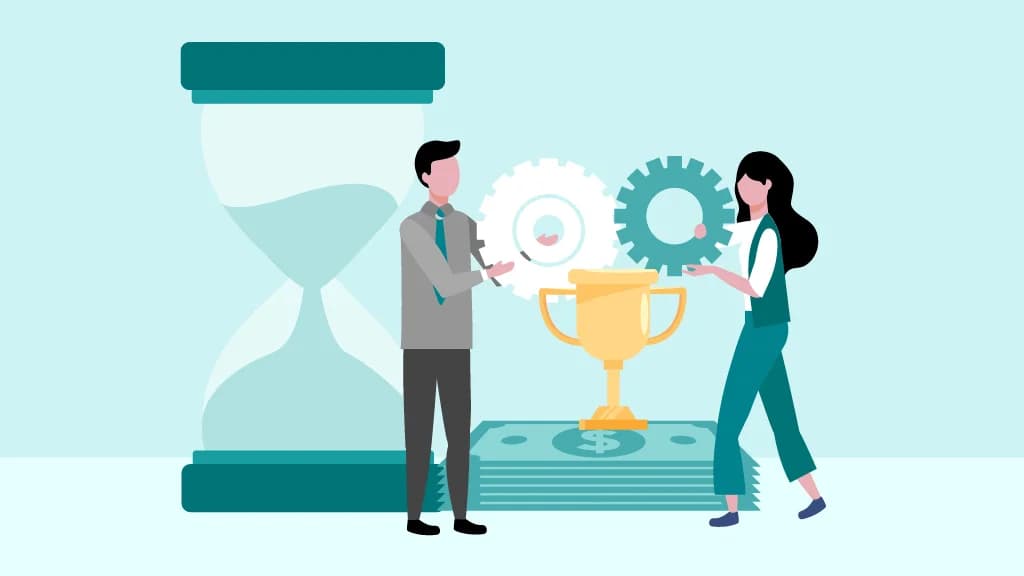
Two technology enthusiasts who met through close group workshops decided to build a compact computer for the industry. More than technology geeks, they both became great friends, too. One was good at mesmerizing people with his charm and influential personality; the other was a great computer engineer who worked for Hewlett Packard Enterprises (HP). Though they were successful in building their first compact computer, it did not really appeal to the corporates. It had flaws and needed to be up to the industry standards. Learning from their mistakes, the duo decided to build another compact computer with a better display, a unique circuit board, and an improved charging adapter. Soon after its release, the product became popular. In fact, to date, this product has sold about six million units. It was the Apple II; the duo was Steve Jobs and his friend Steve Wozniak. Great things do not happen overnight. It needs hard work and, most importantly, learning from mistakes and failures.
Building a recognition strategy is quite similar. Companies have been trying new ways to recognize their employees in search of better results. In this journey, they have made mistakes and failed a couple of times. After a couple of failures, companies have found success and reaping the benefits. If you are building your recognition strategy, you should avoid making these same mistakes, which can hamper your employee recognition program.
Common mistakes in building an employee recognition program
We have gathered some common mistakes that many employers have made in the past. Ranging from soft areas and hard factual aspects in the process of making an employee recognition program. Most progressive companies have learned from it, and others are still learning.
No Personalization
Not utilizing personal milestones
Yes, we all work in a corporate setup where we share professional relationships. But, just having a transactional relationship at work is not enough today. Employers can build personal relationships with employees by not breaching personal boundaries. One way is to celebrate personal milestones. Birthdays and anniversaries are special occasions for any individual. Celebrating these personal milestones of employees strengthens the relationship. Employee recognition platforms can help you in managing this better. Companies can feed such data into the platform, and it will set reminders. So all you need to do is sit back and relax!
Playing favouritism
Making the playing field even for all is essential. Some come confident at the workplace and slide into their roles perfectly from day one. The manager does not need to do much in mentoring or guiding some people. But some need help. They need more guidance and mentoring than others. Though such employees may not look promising at the start but, in the coming two months, they will become your greatest assets. So build a recognition culture, where one does not appreciate only when something ‘Big’ is achieved but also celebrates small accomplishments.
Recognizing only performance
Not incorporating non-monetary rewards
Everyone loves getting more and earning more. Every employee looks forward to earning more money, but money loses its motivation after a while. If we see, every employee already works for a paycheck. What more or above and beyond can companies do for them? So, having small appreciation gestures is important. Using experiential rewards such as vouchers and passes for events or making policies such as flexible working hours is an excellent non-monetary reward.
Not taking feedback from employees
For whom are we really building a recognition program for our employees, right? So, their input and feedback are vital in creating a robust and successful recognition program. We can collect this feedback through dipstick surveys and employee surveys to understand whether your recognition program is really working for you people. By taking regular feedback from employees, companies can keep their recognition strategy updated and ever-evolving.
Not encouraging peer-to-peer recognition
So, now that you are aware of some common pitfalls while making a recognition program for your employees, you are all set to proceed further. These may not be all; every company and their set of workforce has its own nuances. It all depends on the industry and the kind of people you hire. That is why every company will have its unique challenges while creating an employee recognition program. But the most crucial point is to start early! If you still do not have a structured employee recognition program, it is vital to have one and begin your employee engagement journey.






